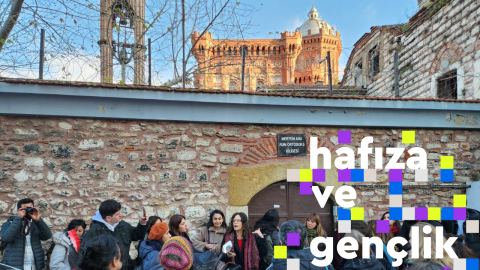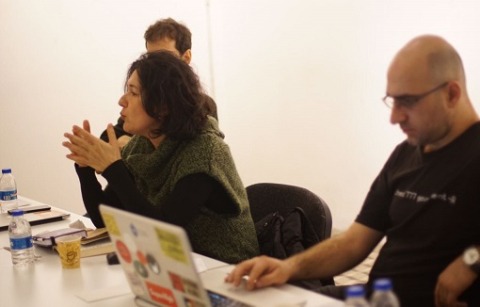
A City That Remembers: Space and Memory from Taksim to Sultanahmet
You may access the interactive map of A City That Remembers from: https://hatirlayansehir.hakikatadalethafiza.org/en
This tour aims to map the city through its political past that is both inscribed in the urban fabric, and yet often suppressed in public memory.
The idea for the tour explained above in Asena Günal’s words came from her voluntary tour guiding for the participants of the Regional Network for Historical Dialogue and Dealing with the Past summer schools organized by Hafıza Merkezi in 2015 and 2016. The tour was held on the Saturdays of the week-long summer school to a group of civil society representatives from the Middle East, North Africa and the Caucasus with a view to introduce them to Istanbul’s memory sites.
The publication, “A City That Remembers”, co-written by Asena Günal and Murat Çelikkan, offers the reader / the viewer a more permanent memory tour. Designed in the form of a book and a corresponding website, A City That Remembers takes its viewers through a route that follows Taksim Square, Gezi Park, İsitklal Avenue, Emek Movie Theatre, Galatasaray Square, Hazzopulo Passage, The “Mısır” (Egyptian) Apartments, Karşı Sanat Gallery, Aras Publishing, Narmanlı Inn, Neve Shalom Synagogue, SALT Galata, The Camondo Steps, San(a)saryan Inn, Union of Municipalities Building, Turkish and Islamic Arts Museum and Four Seasons Hotel İstanbul.
The publication offers its readers an opportunity to get acquainted with Istanbul – whether they be its resident or a tourist, as it presents the suppressed histories of the Ottoman era and Republican Turkey by looking at Istanbul from the lens of a tour guide. The places we pass by or visit on a daily basis are, inevitably, places with certain histories. These are mostly histories of appropriation and violation, injustice and power, but at times also histories of struggle. A City That Remembers sheds light on this rather “unofficial” version of Istanbul’s history through a total of 17 spaces, squares and buildings.
Elazar Barkan from Columbia University described the guide’s appeal to be “oriented both toward the inquisitive tourist and locals who are intrigued by the magnificent cultural and social pluralism of the city and its resistance to oppression over generations” and defined it as “the result of a commitment to draw out the best of the society, by recognizing its responsibility to its past, both in its enduring form and as an opportunity to reinvigorate the city.”
Below is a section from the book’s 17th chapter on Four Seasons Hotel Istanbul:Attempts to convert Sultanahmet Prison into a hotel began in 1992. In 1996, as the luxury Four Seasons Sultanahmet opened its doors, the wards and cells that once forcibly hosted Turkey’s intellectuals, artists and oppositional figures turned into much-demanded rooms that were rarely vacant and available only at very high prices. Turkey thus wasted yet another opportunity in terms of confronting its past. The fact that what could have been a spectacular museum of the history of repression and struggles in the Republic of Turkey was instead converted into a hotel was not only significant as an opportunity missed. The construction of 50-bed annex facilities within the area of the Sultanahmet Archaeological Park right on the site of ongoing excavations of the preserved section of the Byzantine Palace also spurred much debate. The lack of preservation of the Byzantine Palace in Ottoman times with the building of the Sultanahmet Prison upon its remains was taken to a whole other level in the Republican period when the archaeological area surrounding it was marked as the prison yard and included in the plot rented out to the hotel. The construction of the Four Seasons annex buildings was halted by decision of the Council of State despite the sustained efforts of certain scholars and politicians to prevent this. Still, however, construction continued in disregard of this ruling. Minister of Tourism at the time, Ertuğrul Günay, visited the site about a month later and announced that construction had been halted. Yet in the meantime two of the three blocks planned had already been built notwithstanding the Council of State decision to the contrary.
You may access the interactive map of A City That Remembers from: https://hatirlayansehir.hakikatadalethafiza.org/en



